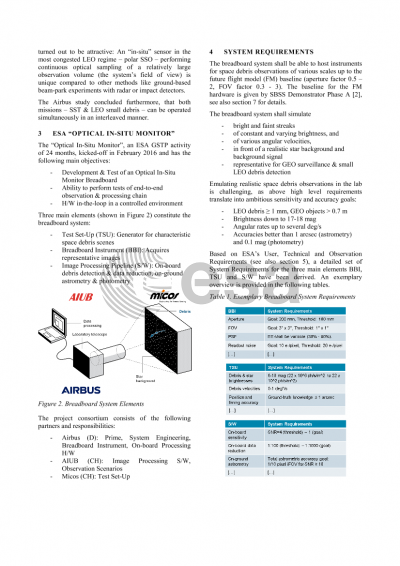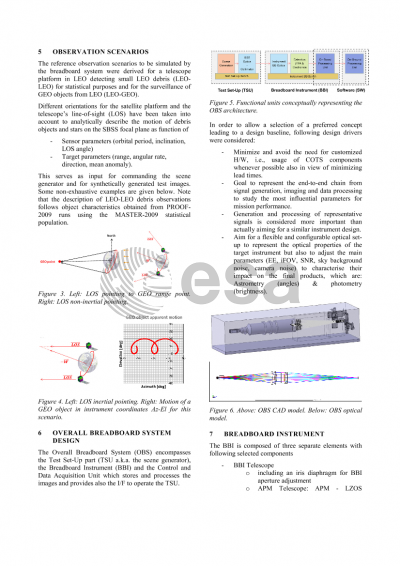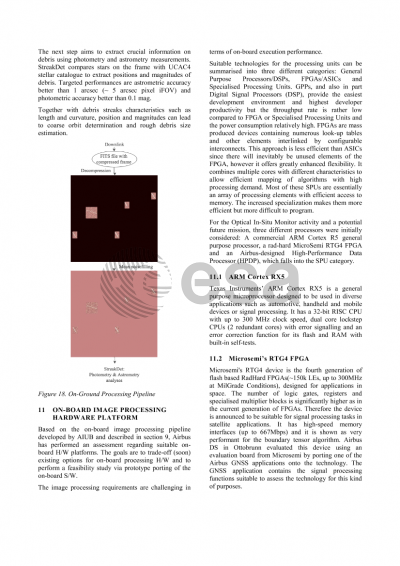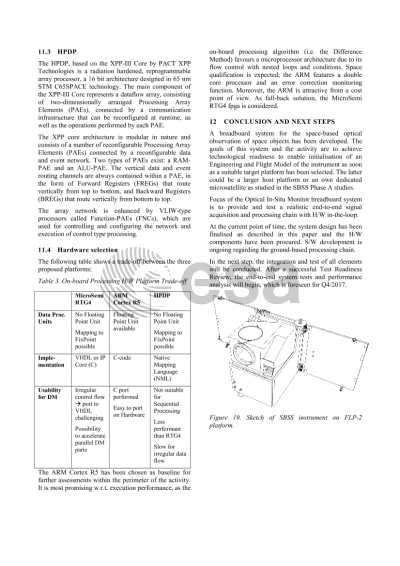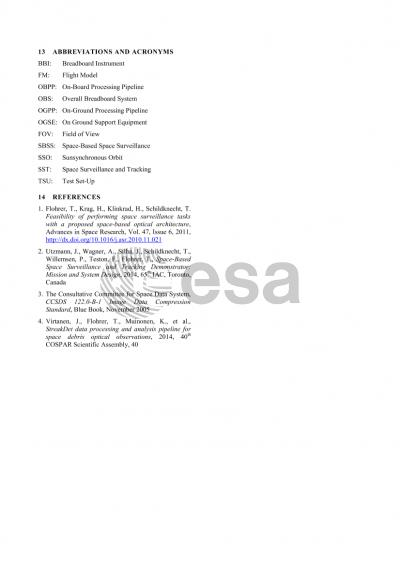Document details

Abstract
The aim of the ESA GSTP activity „Optical In-Situ Monitor“ is to design and integrate a breadboard of a space-based space debris camera and to develop and test its end-to-end processing chain. The corresponding future flight model shall be used for the detection of small-sized (down to 1 mm) space debris in LEO as well as larger objects in GEO. It is intended to be flown on a platform in sun-synchronous orbit near the terminator plane.
The activity‘s breadboard system is comprised of the following three main elements:
Breadboard Instrument (BBI), for acquiring images of the space debris scenes generated by the test set-up.
Image processing software (SW), covering on-board processing (debris detection, data reduction) and on-ground (astrometry, photometry) processing functions.
Test Set-Up (TSU), generating sufficiently representative scenes for space debris observation scenarios and star backgrounds.
The breadboard system will constitute a unique facility to perform realistic tests of the end-to-end chain for debris observations within a controlled environment. This E2E chain starts from signal generation via the scene generator, is followed by the acquisition of images via the breadboard instrument and finally performs the data processing until the astrometric and photometric reduction step. High accuracy is required for the scene generation part regarding motion and photometric accuracy because it serves as ground-truth for the system.
As prime contractor, Airbus DS is responsible for project management, system and performance engineering, the breadboard instrument, and on-board data processing hardware issues. The required image processing software is being developed at the Astronomical Institute of the University of Bern. Micos will provide the space debris scene generator, emulating both debris and star background.
The paper will provide details on requirements and design of the three main elements. The current status of the project will furthermore be presented.
Preview

